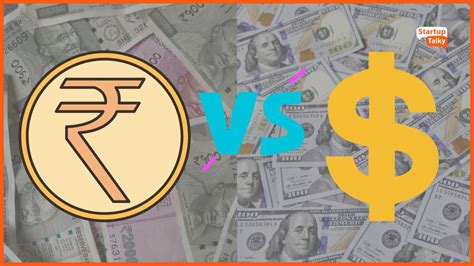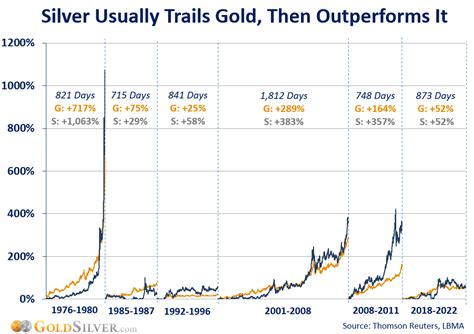Introduction
The exchange rate between the US dollar and the Indian rupee has been a subject of significant interest, speculation, and concern in recent years. As the global economy continues to evolve and the geopolitical landscape shifts, the dynamics of this currency pair are poised to play a pivotal role in shaping the financial landscape of both countries in 2025. This article aims to delve into the intricacies of the dollar-rupee relationship, analyzing key factors influencing its trajectory, providing insights into future prospects, and highlighting implications for businesses, investors, and policymakers.

Factors Influencing the Dollar-Rupee Exchange Rate
Economic Growth and Inflation:
The economic growth rates of India and the United States are key determinants of the dollar-rupee exchange rate. When India experiences robust economic growth, demand for the rupee increases, leading to its appreciation against the dollar. Conversely, a stronger US economy tends to strengthen the dollar against the rupee.
According to the International Monetary Fund (IMF), India’s GDP is projected to grow by 6.1% in 2023 and 6.4% in 2024, while the US economy is expected to grow by 2.3% in 2023 and 1.4% in 2024. This divergent growth outlook suggests a potential strengthening of the rupee against the dollar in the coming years.
Interest Rate Differentials:
Central bank interest rate decisions have a significant impact on currency exchange rates. When the Reserve Bank of India (RBI) raises interest rates, it makes rupee-denominated assets more attractive to foreign investors, leading to increased demand for the rupee and its appreciation against the dollar.
Trade Balance:
The trade balance between India and the United States also influences the dollar-rupee exchange rate. When India exports more goods and services than it imports, its current account surplus increases, which tends to strengthen the rupee. Conversely, a trade deficit can weaken the rupee.
According to the Ministry of Commerce and Industry, India’s trade deficit with the United States stood at $111.5 billion in fiscal year 2022-23. This deficit is expected to narrow in the coming years, which could support the rupee’s value against the dollar.
Foreign Exchange Reserves:
India’s foreign exchange reserves are a significant buffer that can be used to stabilize the rupee when it comes under pressure. A high level of reserves provides the RBI with greater flexibility in managing the exchange rate and preventing excessive volatility.
As of May 2023, India’s foreign exchange reserves stood at $593.7 billion. This robust reserve level provides the RBI with ample ammunition to defend the rupee against external shocks.
Future Prospects of the Dollar-Rupee Exchange Rate
Long-Term Trend:
Over the long term, the dollar-rupee exchange rate is expected to be influenced by India’s economic growth and development. As India’s economy continues to grow and mature, the demand for the rupee is likely to increase, leading to its appreciation against the dollar.
Short-Term Volatility:
However, in the short term, the dollar-rupee exchange rate is likely to experience significant volatility due to geopolitical events, global economic conditions, and central bank actions. Fluctuations in the exchange rate can create both opportunities and challenges for businesses and investors.
Implications for Businesses
- Exporters: A stronger rupee can benefit exporters by making their products more competitive in global markets.
- Importers: Conversely, a weaker rupee can increase the cost of imports, eroding profit margins.
- Multinationals: Companies with operations in both India and the United States will need to manage the impact of currency fluctuations on their bottom line.
Implications for Investors
- Foreign Investors: A weaker rupee can make Indian assets more attractive to foreign investors, leading to increased capital inflows.
- Domestic Investors: A stronger rupee can reduce the returns on investments denominated in foreign currencies.
- Exchange-Traded Funds: Exchange-traded funds (ETFs) that track the dollar-rupee exchange rate can provide investors with exposure to currency fluctuations.
Tips and Tricks for Managing Currency Risk
Hedging:
Businesses and investors can use hedging instruments, such as forward contracts and options, to lock in the exchange rate for future transactions. This helps mitigate the impact of currency fluctuations on their bottom line.
Diversifying Investments:
Diversifying investments across different currencies can reduce the overall risk exposure to currency fluctuations. This can be achieved through investing in international assets or using currency-hedged mutual funds.
Monitoring Economic Data:
Staying informed about economic data and geopolitical events that may influence the dollar-rupee exchange rate is crucial for making informed decisions. This information can be used to adjust hedging strategies or investment allocations.
Conclusion
The dollar-rupee exchange rate is a complex and dynamic factor that plays a significant role in the economic relationship between India and the United States. By understanding the key factors that influence the exchange rate and considering future prospects, businesses and investors can develop strategies to manage currency risk and capitalize on opportunities. As India’s economy continues to grow and the global economy evolves, the dollar-rupee battle for supremacy is poised to continue, shaping the financial landscape of both countries in the years to come.
Case Study: Trade Impact on the Dollar-Rupee Exchange Rate
The trade balance between India and the United States has a significant impact on the dollar-rupee exchange rate. In recent years, India has experienced a widening trade deficit with the United States, which has put downward pressure on the rupee.
In fiscal year 2022-23, India’s trade deficit with the United States stood at $111.5 billion. This deficit is largely due to India’s heavy dependence on imports of oil, electronics, and machinery from the United States.
To address the trade deficit, the Indian government has taken steps to promote exports and reduce imports. These measures include providing incentives to exporters, encouraging domestic manufacturing, and diversifying trade partners.
If India is successful in narrowing its trade deficit with the United States, it could lead to a strengthening of the rupee against the dollar. This would benefit Indian exporters by making their products more competitive in the global market.
Table 1: Key Economic Indicators for India and the United States
| Indicator | India | United States |
|---|---|---|
| GDP Growth (2023) | 6.1% | 2.3% |
| GDP Growth (2024) | 6.4% | 1.4% |
| Inflation (2023) | 5.7% | 7.0% |
| Inflation (2024) | 5.3% | 3.0% |
| Interest Rate | 6.25% | 4.50% |
| Trade Balance with US (2022-23) | -$111.5 billion | N/A |
Table 2: Historical Dollar-Rupee Exchange Rates
| Year | Exchange Rate (USD/INR) |
|---|---|
| 2013 | 60.78 |
| 2014 | 63.07 |
| 2015 | 67.95 |
| 2016 | 68.61 |
| 2017 | 64.14 |
| 2018 | 70.60 |
| 2019 | 71.83 |
| 2020 | 73.08 |
| 2021 | 74.29 |
| 2022 | 79.72 |
| 2023 (May) | 82.83 |
Table 3: Factors Influencing the Dollar-Rupee Exchange Rate
| Factor | Impact on Rupee |
|---|---|
| Economic Growth in India | Positive |
| Economic Growth in the US | Negative |
| Inflation in India | Negative |
| Inflation in the US | Positive |
| Interest Rates in India | Positive |
| Interest Rates in the US | Negative |
| Trade Balance with the US | Positive (Surplus) |
| Trade Balance with the US | Negative (Deficit) |
| Foreign Exchange Reserves | Positive |
| Geopolitical Events | Variable |
Table 4: Currency Risk Management Strategies
| Strategy | Description |
|---|---|
| Hedging | Using financial instruments to lock in future exchange rates. |
| Diversification | Investing in a variety of currencies to reduce exposure to exchange rate fluctuations. |
| Monitoring Economic Data | Staying informed about economic and geopolitical events that may influence exchange rates. |
| Forward Contracts | Agreements to exchange currencies at a future date at a fixed rate. |
| Options | Contracts that give the holder the right, but not the obligation, to exchange currencies at a specified rate. |



